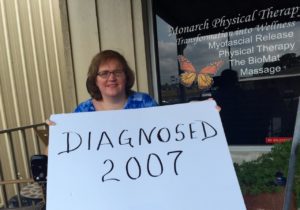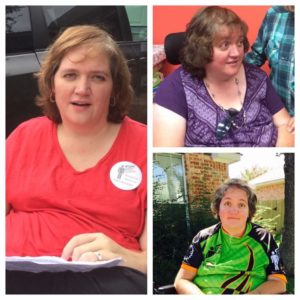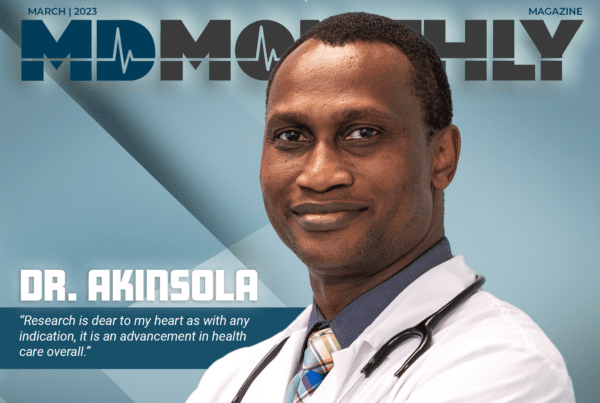 By October 2012, I experienced a rapid decline in my health after several failed treatments. My body was under distress with severe edema, blood markers for additional autoimmune disorders, and the feeling of being boiled with electric currents flowing through my veins. Three years ago, I made the conscious decision to take control of my multiple sclerosis diagnosis. I decided to stop everything; I even canceled chemotherapy treatment recommended by my neurologist, the only next step she could recommend to try to slow my decline.
By October 2012, I experienced a rapid decline in my health after several failed treatments. My body was under distress with severe edema, blood markers for additional autoimmune disorders, and the feeling of being boiled with electric currents flowing through my veins. Three years ago, I made the conscious decision to take control of my multiple sclerosis diagnosis. I decided to stop everything; I even canceled chemotherapy treatment recommended by my neurologist, the only next step she could recommend to try to slow my decline.
I started researching alternatives. I made an appointment with a functional medicine doctor, and he prescribed a little known drug, low-dose naltrexone, normally used to help patients with opioid addiction. In very low doses, it has been found to help regulate the immune system by restoring the body’s normal production of endorphins. He also conducted a micronutrient test so I could pinpoint my most critical deficiencies. Things began to change for the better, and it took about a year for my blood work to reveal that the markers I had for Sjögren’s and rheumatoid arthritis were beginning to normalize. However, I was still struggling with fatigue, muscle weakness, numbness, excess weight, spasms, bowel and bladder issues, and brain fog. I knew there had to be something else.
“Since receiving adult stem cell therapy, I have regained some strength, control, range of motion and have more sensation from head to toe”

Top right photo: Taken at Stefanie’s son’s 4th birthday party in November 2013. Away from the medications, but before stem cells.
Bottom right photo: Taken in September 2014, two months after Stefanie’s first treatment with IV of 200 million MSCs in July. “My droopy eyes began to open, my inflamed body continued to calm and my outlook began to change.”
Left photo: Taken in September 2015. After one year of intense physical therapy, diet changes, another treatment of stem cells in April and the addition of working out with Primal 7.
After talking with patients, doctors, researchers and different stem cell companies, I decided to join the growing ranks of stem cell pioneers and leave the greatest country in the world to be treated with my own adult stem cells, which play an important role in the body’s healing process.
I turned to Houston-based Celltex Therapeutics Corporation, which is known for its proprietary technology that allows its clients to harness the power of their own cells. Because the U.S. Food and Drug Administration has deemed our own stem cells to be a drug if they are expanded in large quantities, I was unable to receive infusions of hundreds of millions of my own stem cells in the United States. Instead, I travelled to Cancun and was overseen by a caring team of physicians at Hospital Galenia.
Since receiving adult stem cell therapy, I have regained some strength, control, range of motion and have more sensation from head to toe. The nerve damage and weakness that led to wheelchair use is the hardest to overcome, but being in a mode of improvement versus severe decline gives me hope.
I have dropped four clothing sizes, too. Some days feel like two steps forward, one step back, but I’ll take that over the unbearable frustration with ineffective, expensive and side-effect ridden treatments available in the United States. Some may view my actions as rebellious or non-compliant, but I stand by my decision because I was making a last ditch effort to salvage my health and life.
 The improvements keep coming. I would love to have additional stem cell treatments to see how much my adult stem cells can restore the damage, but there are financial and travel burdens to be carefully considered. Ironically, the cost of one stem cell treatment with travel expenses can be thousands of dollars less than one month of some MS treatments covered by insurance in the United States. Yes, it hurts to pay out-of-pocket, but it hurts worse for absolutely nothing to work.
The improvements keep coming. I would love to have additional stem cell treatments to see how much my adult stem cells can restore the damage, but there are financial and travel burdens to be carefully considered. Ironically, the cost of one stem cell treatment with travel expenses can be thousands of dollars less than one month of some MS treatments covered by insurance in the United States. Yes, it hurts to pay out-of-pocket, but it hurts worse for absolutely nothing to work.
My experience leads me to say that we all deserve the right to access our own adult stem cells. I’ve come to the conclusion that it means as much to me as the life-saving emergency blood transfusion I received when my son was born. My experience with Celltex has been life changing. I urge others in my situation to look further when you think you are out of options. Empower yourself. Surround yourself with the right people and information to restore your health.
Stefanie is in the process of obtaining her own power-standing wheelchair, which would have been impossible for her before Celltex adult stem cell therapy.







Recent Comments